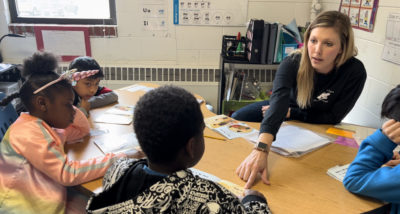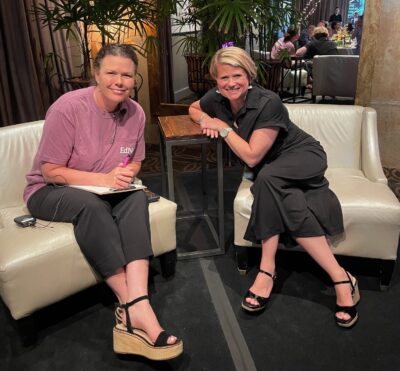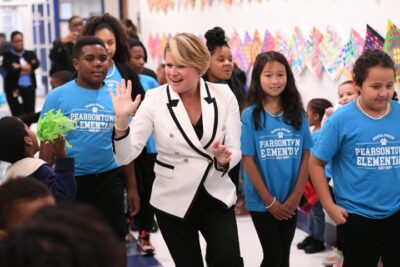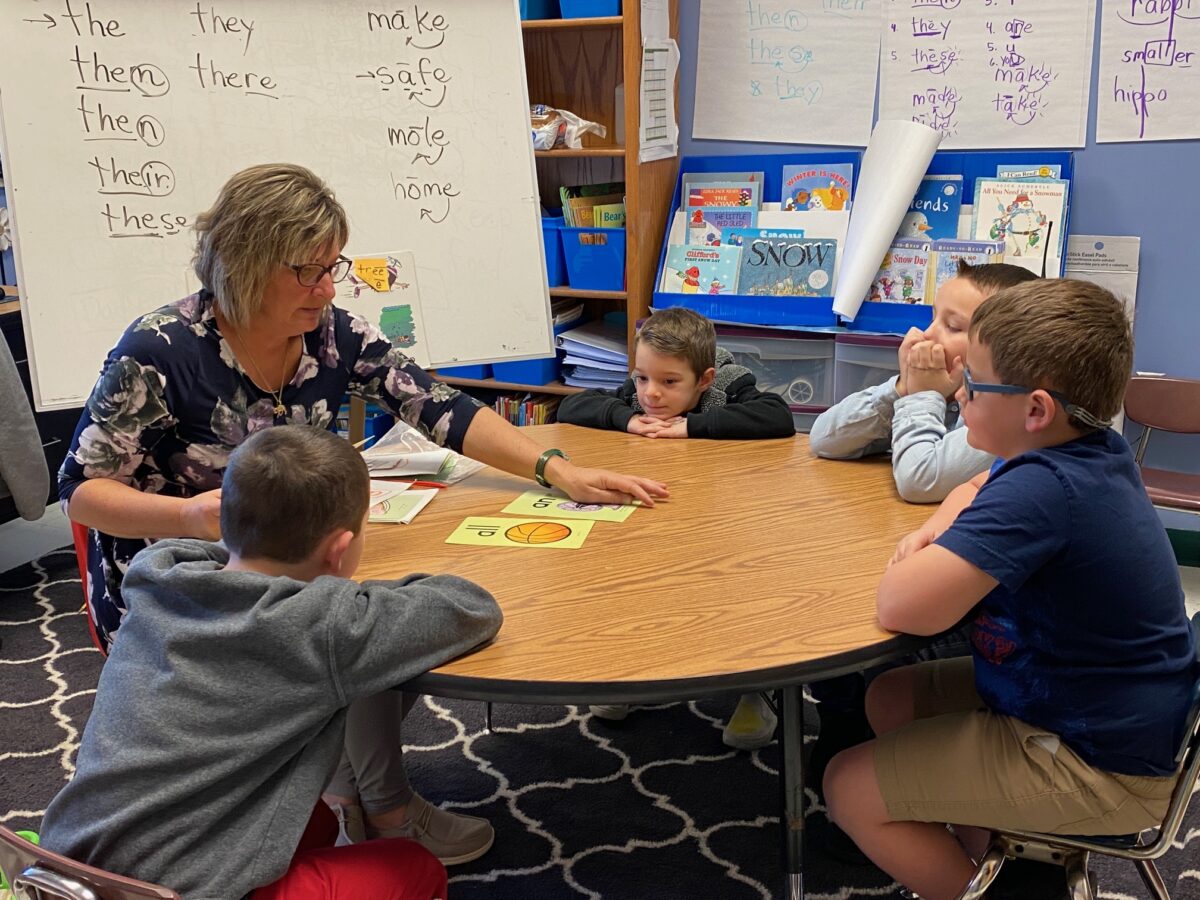
|
|
This week, Superintendent of Public Instruction Catherine Truitt provided an important update to the N.C. State Board of Education on the science of reading in our local public schools across North Carolina, praising the “dedication of our teachers and the efficacy of the professional development coordinated by NCDPI’s Office of Early Learning.”
In April 2021, the N.C. General Assembly passed the Excellent Public Schools Act of 2021, and just like that, the state embarked on what Truitt calls our “science of reading journey.”
Implementation of the law started in schools and districts that August with Language Essentials for Teachers of Reading and Spelling (LETRS)® training, which includes 160 hours of study across eight units and takes two years to complete, equipping teachers with instructional tools based on decades of research into the science of reading.
Teachers quickly saw the impact in their classrooms, and in June 2024, the third and final cohort of teachers successfully completed LETRS.
“To say that I’m proud of these over 44,000 educators would be an understatement,” Truitt said in a release from the N.C. Department of Public Instruction (DPI).
The state also now has early literacy specialists in almost all of our 100 counties. Here is an interactive version of the map below that allows you to click and contact in each county the early literacy specialist, the regional literacy consultant, the regional literacy facilitator, and the regional early learning consultant.

And now, for the third year in a row, North Carolina’s kindergarten through third grade students outperformed the national average on end-of-year literacy assessments, Truitt said in her presentation to the State Board and a press release.
Prior to the Excellent Public Schools Act of 2021, Truitt said in her remarks, schools and districts across the state used multiple literacy screeners. Amplify won the state’s RFP, and now one early literacy screener is used statewide.
“Screeners are designed to give benchmarks three times a year to our kindergarten to third grade teachers on students’ progress in early literacy,” said Truitt.
The data allows educators — and the state — to be predictive about student success “in reading to learn as opposed to learning to read,” she said.
Screeners are administered face to face with students at the beginning, middle, and end of the to track progress toward literacy. Truitt called them crucial, allowing teachers to see where students are not gaining the knowledge and skills they need to become profiecient readers and then to adjust instruction for individual students.
The screener is the DIBELS 8 assessment, which stands for Dynamic Indicators of Basic Early Literacy Skills.
The assessment has been administered to kindergarten, first, second, and third graders statewide beginning the same year as the LETRS training. It consists of a set of measures designed to evaluate component skills involved in reading.
According to the presentation, 438,949 students have been assessed, including 13,905 students who have been assessed in Spanish, with a 97% completion rate statewide.
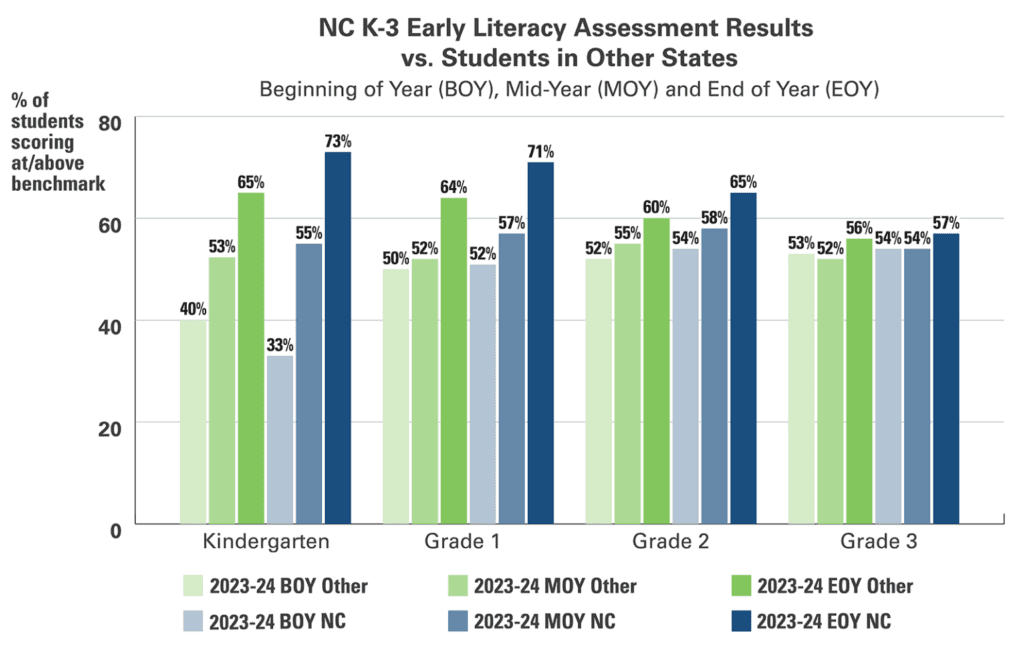
At every grade level tested, the press release says, a higher percentage of North Carolina students measured as “on track” than the national average. K-2 students also showed greater improvement from beginning- to end-of-year assessments, while third graders improved at the same rates as their peers.
In North Carolina, the number of students who met or exceeded the benchmark assessment grew by 81,616 from the beginning of the 2023-24 school year to the end, according to the press release. Meanwhile, 53,808 fewer students scored well below benchmark.
“They call it the ‘science’ of reading because, like any scientific concept, these methods are grounded in research and data. When we implemented LETRS, we knew we’d see results,” Truitt said. “But to have so many students improve this early in our state’s new literacy journey is a wonderful surprise.”
The greatest gains in North Carolina’s scores can be seen in kindergarten, where the percent of students who are on track in reading grew by 40% during the 2023-24 school year, compared to an average of 25% for other states, according to the press release.
Amy Rhyne, senior director of DPI’s Office of Early Learning, said reading skills are like building blocks, with each grade building upon what was learned in years past. This is one factor that accounts for the differences in achievement between grade levels.
“This year’s third graders were already in first grade by the time the original cohort of teachers began LETRS, so it makes sense that they’re not experiencing as much growth as the K-2 students who were exposed to the science of reading earlier,” she said. “Now that all of our students will enter kindergarten with a teacher who has completed LETRS training, they’ll be able to build a really strong foundation. We expect to see that reflected in even greater achievement for our students in years to come.”
Here you can see the progress across student demographics by grade.
Here you can see a district highlight in each region, including:
Camden County Schools, where strong processes stabilized a district leadership transition;
Nash County Public Schools, where the district prioritized walkthroughs of classrooms with targeted feedback;
Alexander County Schools, where professional learning communities consistently worked with leaders and coaches, and professional development was differentiated;
Mount Airy City Schools, which are in the second year of implementing the Core Knowledge Language Arts curriculum;
Clinton City Schools, where K-4 teachers are implementing Amplify Burst interventions to close gaps;
Brunswick County Schools, which have been focused on strategic planning;
Lincoln County Schools, which aligned science of reading resources to pacing documents; and
Haywood County Schools, which the presentation cites for their “all in approach! District and school administrators have attended Literacy for Leaders to support teachers. Changing processes to do what is best for kids, even when it’s not easy. Continuous improvement mindset.”
Here is Truitt’s presentation.



